Turning 35 – Reflections on Success, Travel, Generalism and Relationships
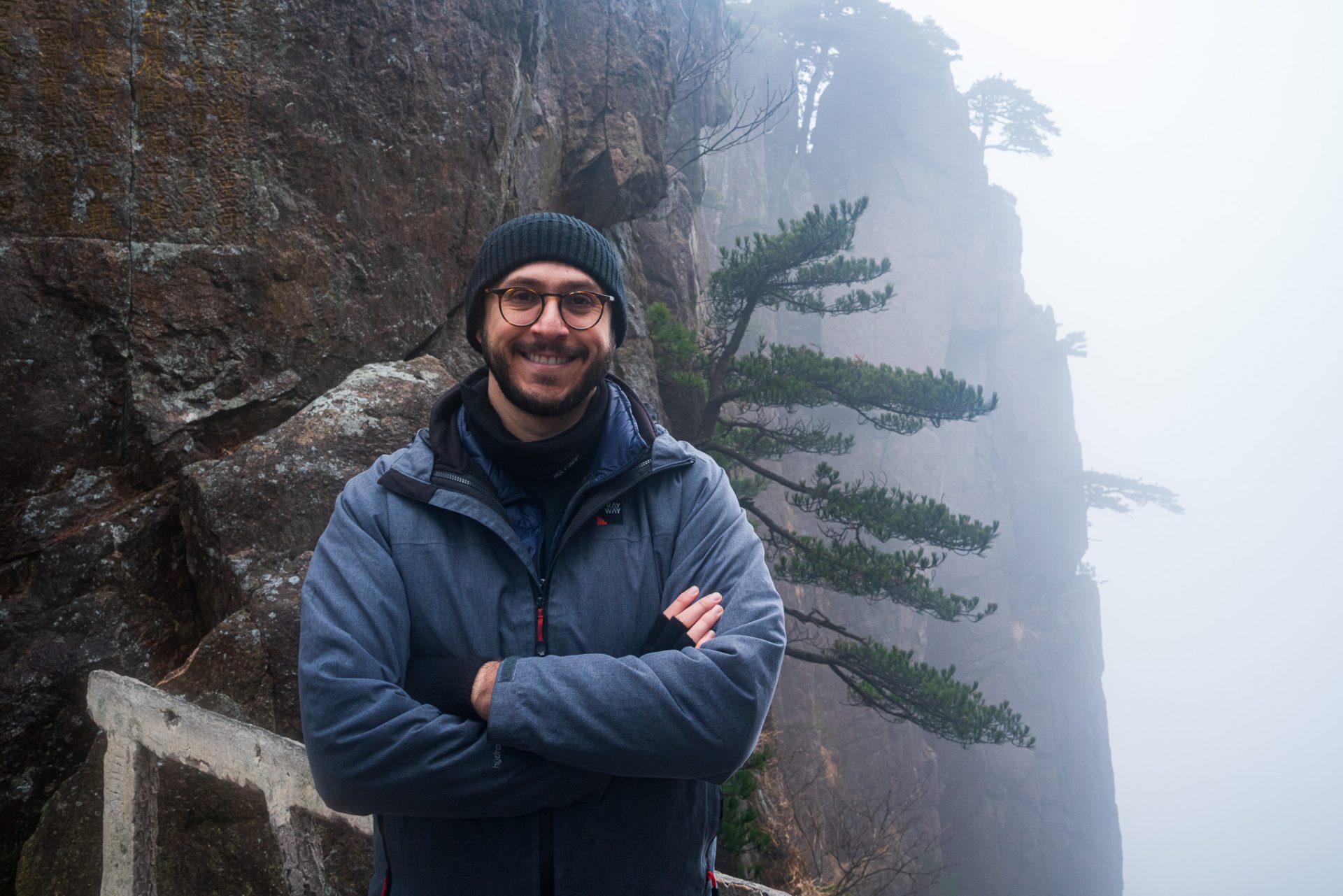
As long-time readers know, every year I write a birthday post that contains general reflections, musings, and observations drawn from the previous year.
I hope you’ll enjoy these thoughts and take them for what they are – an attempt to share the world as I see it and how I relate to it. You can view my 34th birthday post here, 33rd birthday post here, 32nd birthday post here, 31st birthday post here, my more detailed 30th birthday post here, my musings on turning 29 here, or 28 here. As well as a long-forgotten blog post written on my 23rd birthday (wow, have I really been blogging that long?) which you can view here.
Individualism as a Lens
One of the most exciting discoveries this year came from re-visiting and doing a dedicated coaching session based on the results of my Clifton Strengths personality test, and more specifically a closer look at my dominant strength. Previously, I’ve written about how I’ve gone from being extremely dismissive of the value of these personality tests, to lukewarm, to a strong proponent.
My earlier dismissal of them stemmed from seeing them misused actively during the majority of my job searches where I took the test, which was largely ignored through the interview process, and then taken as something fixed and definitive. My ideas began to evolve when I had an interview with a fantastic hiring manager 6 years ago at the Danish Technical University, where the results were actually used to guide the interview; to review personality traits, points of interest, and areas of agreement and disagreement. Now, with my latest coached sit down and review of the results, I’ve become a strong fan and advocate. When used correctly, the test can provide an illustrative tool for facilitating communication.
I find each test format is also different and provides a mixture of different insights. From food for thought and introspection into how I relate with the world, a look at alternative world views, and then as a lens for making communication more effective.
While the Clifton Strengths tool has been the one I found most interesting, for context I’ve also scored as a ENTP-A (Assertive Debater) via the free 16 Traits survey, a strong-red “Director” with balanced tendencies in the R/G/B/Y Insights Discovery color wheel tool, and as an Enneagram 7 (active pivot to 1, rest pivot to 5).
What made the Clifton Strengths report particularly interesting for me, was that when I first took the test two years ago it seemed to largely have landed with mixed results and accuracy. I had high-level descriptions of what the 34 traits meant, but little additional context or descriptive text. Two years later, as part of the guided session, I also got access to my full report which included strikingly accurate behavior and trait descriptions and helped flesh out the actual meaning behind some of those traits. This is where the Individualism trait comes into things.
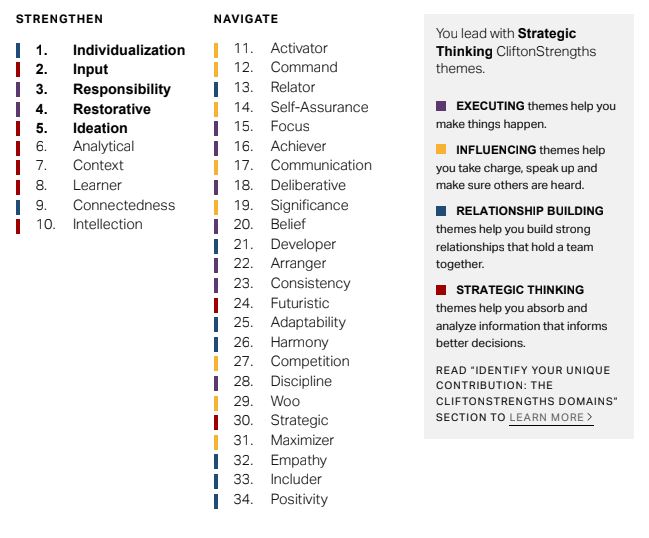
I found it odd that the traits of Woo, Empathy, Strategic, Empathy, Inclusion and Futuristic all scored extremely low. At first it generated significant skepticism and similarly surprised and shocked friends I shared the results with. Woo, Strategic and Empathy, in particular, are extremely odd weak traits for a person working in marketing, with my profile, and a foundational belief that the core of human ethics can be traced to empathy.
The answer, however, sits in the Individualism trait. And this is why I’m leading this year’s post with this reflection. For years a common thread through these posts has been the struggle with misalignment between different world views, orientations, and reflections. Practical Curiosity is effectively an explorative and reflective text designed to help bridge different ways of thinking, world views, and to help provide added context and insight. But, even with those illustrative processes, the core piece missing was a Rosetta Stone of sorts for translating between different ways of thinking and processing.
What the 34 traits ranking picked up on and flagged was that my dominant lens (by a significant margin) is the “Individualism” trait. Which is not to say being selfishly individualistic. Rather, that I view the world and myself through an extremely aggressive individualized lens. Each person, situation, and interaction I engage with is something I view by default as individual to that person and experience. I then feed that information back into my own mental model and digest it through contrasts, overlap, and alignment. This often leads to confusion for people, who misinterpret my interest in better understanding the individualized nature of a situation and incorporating that as inwardly or externally critical vs. just digesting the information and how it fits together.
This is where and why the traits like Woo and Empathy landing at the bottom end of my trait profile actually end up making perfect sense. What the test is picking up on, is different origination points and mental models/world views and ways of thinking and processing. My empathy is fed and potent because I manifest it through a strong desire to understand the individual needs, way of thinking, situation, world view, and processes that drive a person. But that is processed and enabled through a highly tailored interest in understanding who they are, how they feel, and why. That’s in stark – nearly a polar opposite even – to someone who had a similarly strong tendency but through an emotional empathic lens. These individuals feel their empathy as an intuitive emotional response and may or may not need to/be interested in/or find their way deeper into the individual’s individualistic situational profile. One leads from the mind and the other through the heart.
Woo is also similar. I’m an effective and at times persuasive storyteller because I can rapidly and relatively easily digest a wide range of different potential interpretations. I can deep dive and refine that understanding, and I enjoy the debate and critical exchange side of things because it helps me better understand how others relate to/perceive/think and engage with a topic and contrast that against my own perceptions, behaviors, and where I want to evolve as an individual. In this way I woo through my individualized worldview and way of thinking. This contrasts heavily from intuitive woo-ers. Individuals that organically and impulsively relate to and story/bond through dynamic storytelling. It’s fun to compare and contrast these and how they might express in different personalities. Obama? I would imagine he would be closer to my path to persuasion/woo, as are many journalists. But, Clinton and Trump, or great propagandists or networkers? Maybe even Steve Jobs? All likely very high on the woo scale.
This is the beauty of using these tools as a translation tool between perspectives. Not only did it help me further clarify and cement the internal lens I view and process/relate to the world through, it also provided a structured and pre-defined tool for mapping that to people with other, different strengths. Particularly when engaging with and exploring topics with friends, colleagues, and partners who may have individualism as one of their softer traits.
And what of the other top 10 traits? They’re interesting, and great for introspection into how I approach, shape, and nurture the first trait. But with the first being such a foundational – firmware if you will – piece of how I relate to the world, they’re more ancillary shading for introspection than formative insights.
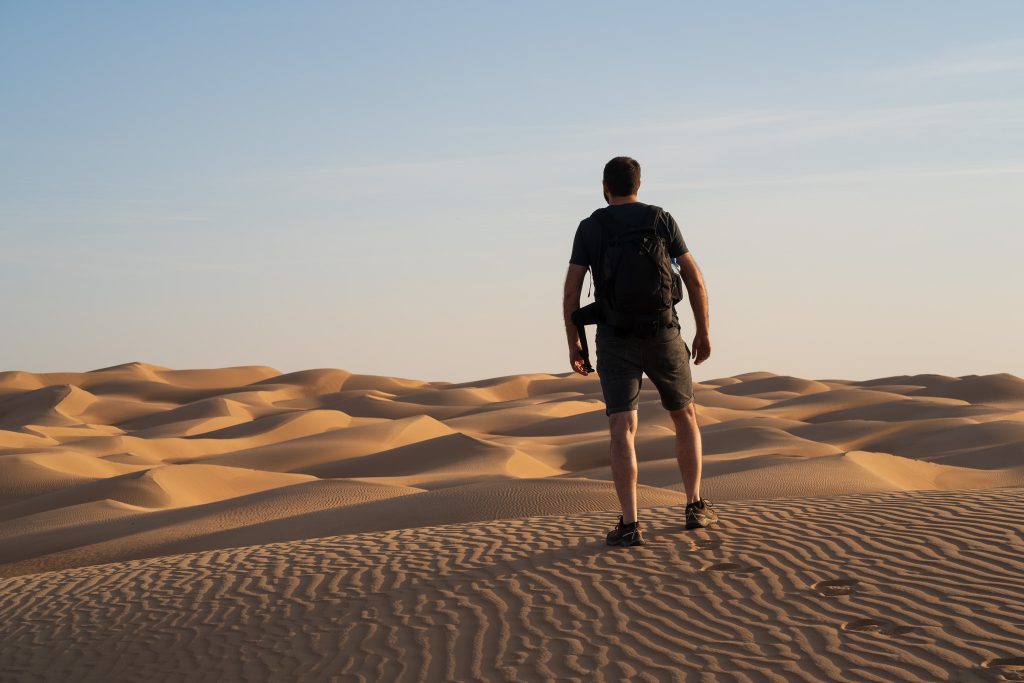
The Three Spheres of Focus
I’ve long focused on navigating the balance between work/life balance and relationships. It’s part of what kept me in Denmark, part of why I chose not to pursue travel writing as a full-time career and has shaped my career development in recent years. However, with 35 racing toward me, this past year was slightly more reflective than most. How should I prioritize my time and energy? Where should I invest my primary effort? How much space was I willing to make for people? What was I looking for and why?
At the same time, I’ve also been acutely aware over the past four years of a very intentional struggle to preserve that work-life balance, time, and emotional/creative energy for my projects. There’s a ton on the topic in last year’s birthday post.
This year though, I had a few great epiphanies that came out of conversations and reflections. One of the big ones was with my friend Katarina who nudged me away from thinking of work/life and relationships as a singular balance with the majority of the focus on work/life balance. Out of it, I’ve started to think and explain where I am and how I evaluate and map my needs and priorities using a finite amount of energy split between three parallel pools of energy. A fairly standard split for a 20-30 something career professional in a high-intensity industry looks something like:
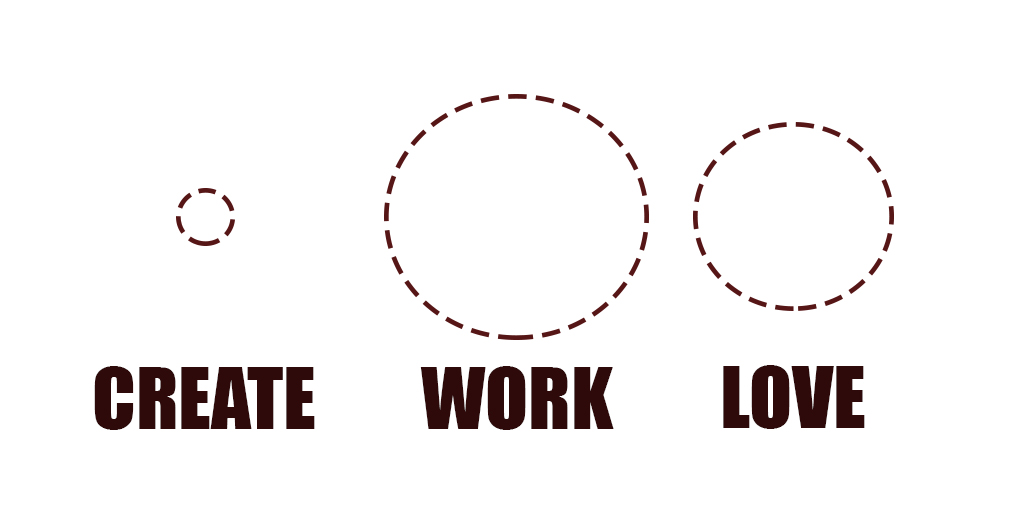
The cultural norm and lifestyle we’re nudged toward is one that invests the majority of our intellectual, emotional, and physical energy in work and our career. From high-intensity workdays, to working longer hours, weekends, evenings, and spending time out of office thinking about in-office considerations, this is the archetypical structure most of us are pushed towards. The majority of our remaining time is invested in our families and relationships. That’s dating, partner time, combined social events and general relationship maintenance. What’s left is a very small amount of time and energy for creative and personal projects – hobbies, crafts, personal development, and in most cases that’s consumed almost entirely by working out/fitness.
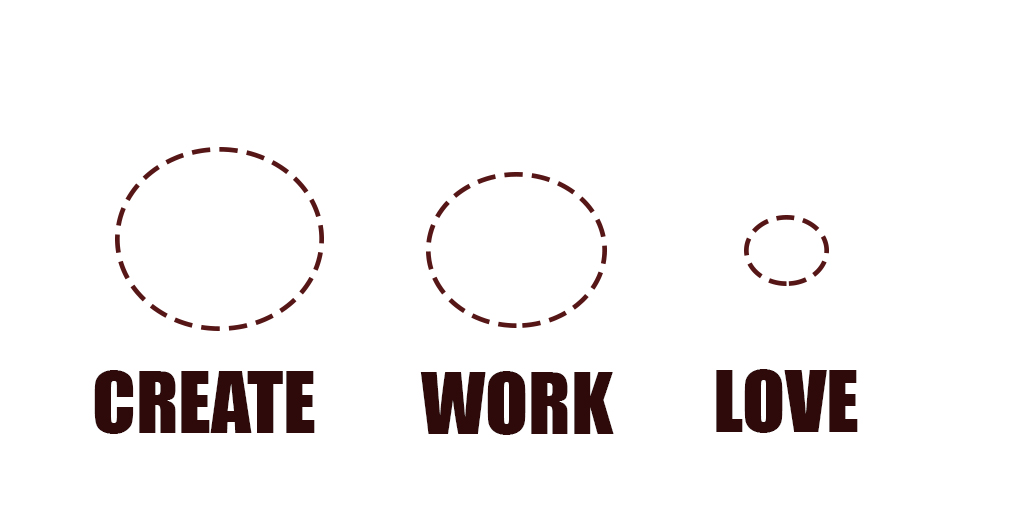
The above reflects where I want to be (not where I am) at this point in my life. The reality of my current situation probably reverses the size of Create and Work but largely leaves Love around this size. And that’s where the insight from Katarina was invaluable. I’ve historically treated Relationships / Love and the search for a Partner as an exterior/different consideration that was almost viewed as coming from a different pool of finite energy/time. But, what this exercise made abundantly clear was that the same processes and steps I take to protect and preserve my “Create” focus to shut out, cannibalize, and at the very least reduce my focus and available time and energy for “Love”.
These are constantly evolving and 35 is a great time for me to check in and evaluate how happy I am with the balance. Is finding a long-term partner starting to become increasingly important and something I anticipate incrementally growing in size in the coming 5-8 years? Yes. But, am I still comfortable and interested in prioritizing the majority of that invested energy and balance between Create and Work? Absolutely. Similarly, does it make sense to continue to attempt to aggressively defend the Create energy from the Work energy? Absolutely, particularly because in my case I use the Creative outlet to supercharge my ability to perform at Work and as a bolster that keeps me balanced and from excessively defining self-worth, reward, and achievement by day-to-day work trends and feedback.
To support this balance, I’ve made a few strategic changes in H2 2019 and 2020 so far. First, I actively passed on what would have been a strategic promotion, but one that would have required added time and significant emotional/energy investment in areas that would have heavily eaten into my Create pool of energy. This was a continuation of many principles and reflections outlined in last year’s post. That said, it also meant I had to overcome my innate wiring to step into the opportunity as it was made available. It also required months of introspection and internal dialogue with myself to navigate my ego, master it, and subdue it.
At the same time, I’m also working to pivot and re-claim some of that Creative energy and space. While I felt major gains with my photography over the last year, many other projects and creative endeavors – startup side project ideas, my marketing book, etc. have only made the tiniest of advancements. 2020 is poised to be a year where I re-energize and prioritize Creation and hopefully leverage that renewed energy and bandwidth to tie off several of those projects.
Meanwhile, I’ll continue to work to balance that with an added eye towards creating space for the relational side of the search. It’s a subtle additional layer of thinking and awareness, but being more conscious of how I prioritize time, energy
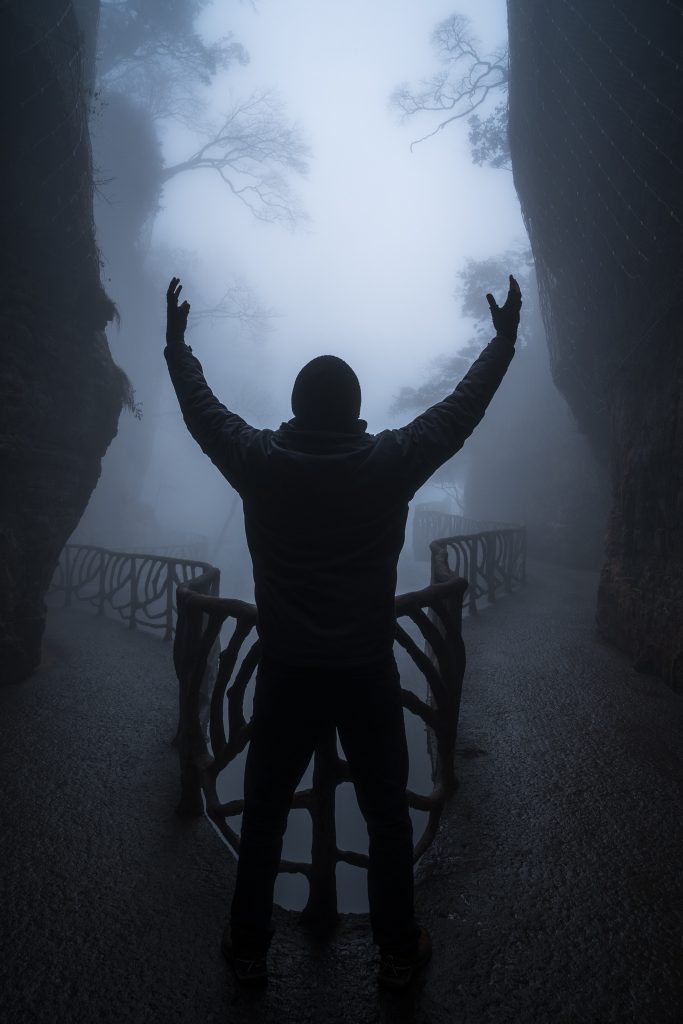
Stress, Depression, and an Updated Working Theory
Increasingly, I see friends going down with work-related stress. Powerful, resilient, passionate, and talented people. But, people who have ended up in situations that are overwhelmingly stacked against them, or which overwhelm their tools for navigating the situation. When I consider the impact my year and a half job search six and a half years ago had on my health, psyche, and energy level, I can still feel goosebumps and a small tightness of breath. I am now profoundly grateful for that experience as it has opened up an expanded frame of reference, empathy, and insight. It also factors heavily in my choices to prioritize life balance, seek to chart a healthy and productive path, and to nurture my full potential.
In last year’s post I wrote a section titled “Moderate Depressive Triggers”. This year I want to update that with a new insight I’m only just starting to explore and work through. It’s a confluence of different ideas, layered across and explored through each other. So forgive the slightly confusing and complex introduction.
Previously, I’ve referenced the epiphany of this moment:

It’s the moment a herd of Impala spotted a stalking Lion. All eyes and years locked on. Their bodies pivoted instantly to fight or flight. Their breathing tightened, their eyes widened, their focus became laser sharp, they emptied their bowels, and the prepared for a burst of speed at almost any cost.
I often reference back to this moment, and the related physiological reaction for a variety of reasons – I use it as a tool to understand everything from fear of stage performances and physiological reactions, to difficulty sleeping, and now – as a potential exploration of the engine that magnifies depression. I also use it as a lens for exploring the effects of prolonged work or life stress … of anxieties, fears, and similar concerns.
I also view the human body as a highly complex piece of machinery that consists of an evolved complexity. Layers and layers of interdependent simple things, that bring what seem to be an almost unimaginable level of complexity. A prime example of this is our ability to swap out pieces – a heart, a kidney, a lung. The brain is its own unique aspect, infinitely more complex and nuanced. But, at the same time, I strongly believe that many things can be explained by carefully working back and identifying the underlying causes.
In a recent conversation with a friend who has faced an extended period of stress, work burnout, and related health issues, an offhanded comment completely inverted the way I think about depression and its relationship to stress. In our conversation, the friend mentioned in passing that their psychologist had expanded their work together to include a test for OCD. My immediate impulse was one of surprise and an inclination to view it as something separate. What does stress have to do with OCD or depression? And similarly, are the three related, are some symptomatic of the others, and how do they interact with each other?
As a culture, I generally think we know there is a strong relationship between stress, perfectionistic traits/extended self-control, and depression. But, I also think we tend to think of the two as separate entities, or if anything, that depression is caused by a chemical/biological imbalance, which then creates or amplifies stress. What if that’s backward? How does focus play into it?
What if a major factor in shaping and triggering the cyclical nature of stress and depression can actually be traced back to those impalas? What if the very traits that make many high performers exceptional – an ability to focus, and baseline traits that mirror what eventually becomes OCD in its most extreme form – come together to shape a mechanical process with far-reaching psychological and health impacts.
We already know that the fight or flight response (quick catch up here) has a deleterious impact on health when it is prolonged. Part of that process is the flooding of the body with the stress hormone, cortisol. Which in turn triggers secondary issues with dopamine. And the interplay between these two, and a correlation with things like depression and chronic stress are floating around in some of the literature (eg this writeup). But, I think there’s an even more powerful way to think about the relationship taking place here and its impact.
My theory is that for a variety of reasons there are individuals that have a far easier time entering and exiting fight or flight states. These individuals are able to dip in, benefit from the biological response, and then dip out without any cumulative negative impact. These individuals may dip in more/less than others, but rarely spend any prolonged period of time in a given fight or flight state. At the same time, you have individuals that dip into fight or flight in a far more pronounced, or prolonged fashion. When they do this, they end up building up unhealthy levels of some hormones, while depleting others.
Think about it a bit like two vehicles. They reach a mountain pass and then have to cross it. One is a sport car designed for speed, that is light weight, and able to navigate the extended 7% incline without issue. Their RPMs stay relatively low, they can even pass traffic on the way up, their engine temperature is normal, and while they burn a little more gas they’ll largely remain close to their baseline.
The other vehicle is heavy, pulling extra weight – think of a semi truck, or a pickup truck pulling a trailer, and has to operate with greater care. The second vehicle will burn gas at a much higher rate, have to run the hill in a much lower gear, and still faces an increased risk of overheating and potential breakdown or cumulative wear and tear. Things like rest stops may help, increased ventilation also keeps the temperature down a little, but a heavy load and weight make for a challenging journey.
So what happens? That second vehicle burns through its fuel faster, all the motion-giving energy it needs to keep going forward. At the same time, it builds heat, which reduces efficiency and can eventually cause a breakdown. And if everything goes wrong? You find yourself halfway up a hill, with an empty tank of gas, and a broken down vehicle that just overheated.
As humans, I suspect we’re not that different. That certain types of thinkers – those that slip into the heightened state that resembles (but may not directly map) fight or flight, end up being that second vehicle. That depression, rather than being a cause, is just a symptom that results from a depleted gas tank and overheated engine.
Which is where the OCD element becomes particularly curious for me. Here, I don’t mean actual clinical OCD. I’m actually much more interested in the underlying dimension of focus and its relationship to processing and re-processing. When I reflect on the friends who struggle most with depression, stress and navigating it and also turns lens inward, I see individuals who process and re-process material and potentialities. In Practical Curiosity, I included a chapter, “Thinking Ahead or Jumping In” where I explore how different individuals operate in more or less immediate fashions. My suspicion is, that for a cross-section of the population, highly controlled focus paired with considering a wide range of potential outcomes triggers a similar physiological reaction to fight or flight.
To illustrate, consider two individuals facing the same situation. The first is more immediate, similarly talented, but processes stress differently. They see the situation, impulsively settle on their path forward, and then take the action. The moment of decision making, and perhaps a moment of reflection after, trigger some anxiety or heightened focus/attention, but that is relatively limited.
While the second individual arrives at the situation and identifies that there are roughly 20 potential choices and outcomes. Of these, one is clearly the obvious one, and has a high probability of being the correct choice. But, the second individual dips into a focused/attentive state with fight or flight tendencies while re-considering, processing, and working through each of those other 19 options. Beyond that, they further stay in that stressed state, considering the potentiality of a 21st option which they don’t know about, yet, but they know it could exist, and change the right choice. Eventually, they make the decision. Then continue to second guess if that 20th option was really the best choice. They have this on-going internal dialog…did I make the right choice…was there any sign of a 21st choice…I better re-check all 19 of the alternative choices to be sure… Exhausting, right? Now consider how the impact of this could reflect that ability to dip in/out of that heightened fight or flight state and how fast a person burns gas/overheats.
The last dimension that came into play, was a lucky happenstance of timing. Shortly after having the preliminary conversation and starting to think through the above, I was reminded of how different people’s individual inner monologues are. Perhaps you saw the posts floating around socials, but essentially it boils down to two different groups. There’s a cross-section of the population that has a running narrative similar to a voice-over in a movie that runs in their head when they’re in conversation. (No surprise I fall into this category). And then, there’s another cross-section of the population that purely experiences things and thoughts without that monolog (links here and here). From casual conversations, it seems that you also have a spectrum from silent to overactive chatter; that it’s not an either/or situation in most cases.
What I’d love to further explore in the year to come, is how this inner monologue further factors into shaping and nurturing those more obsessive tendencies and inclinations to get lost in potentialities (21 potential choices example above). Essentially, how that internal voice might be responsible for making it more difficult to dip in and out of fight or flight and to recharge.
Ultimately, my hope is that in changing my understanding of cause/effect it’s possible to start to explore ways to navigate the situational, behavioral, or mental models that trigger burnout, exhaustion, and depression. Both to work re-actively to help counter those cycles when they happen. But also to pro-actively break or start to modify the core triggers.
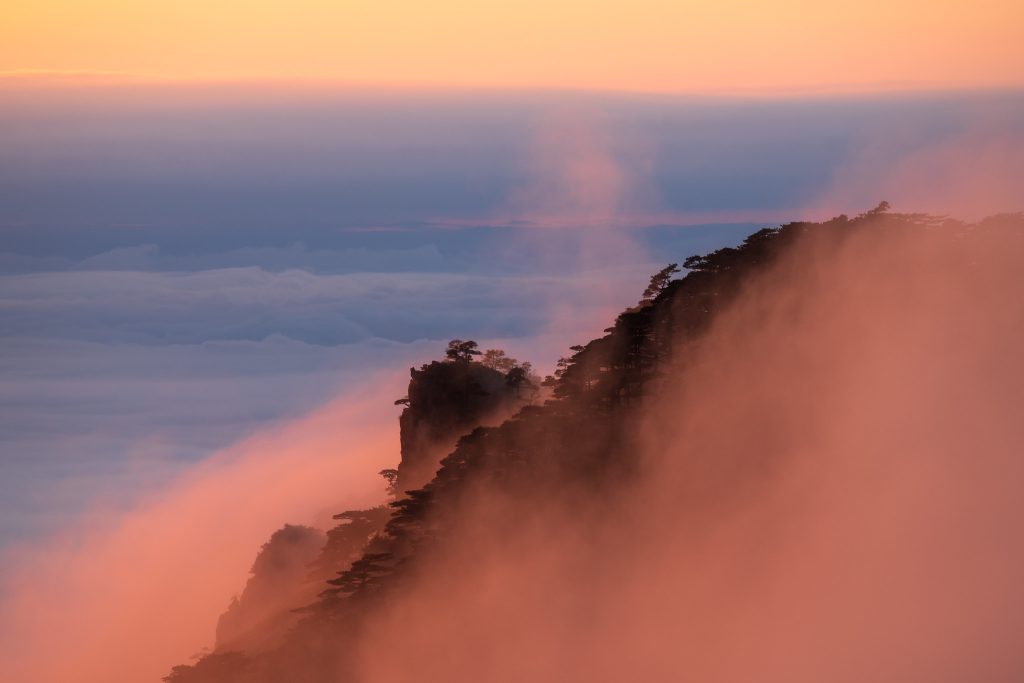
The Four Day Rule
One of the best additions to my regular regime this year was a more consistent application of what I call my four day rule. It’s an essential tool I use to protect my free time, to preserve balance, and to maintain the ability to be reactive. It’s also a tool I use to keep windows in my schedule where I can book trips, avoid having to cancel on people, and maintain a balance between respecting people’s time and energy and my own needs.
But, I’ll also be the first to admit, it’s also an extremely annoying and somewhat vexing “rule” for many people.
What’s the rule? In brief, it boils down to a simple approach to making plans and commitments. At any given point in time, I will not make any plans more than four days out that are not 1) absolutely unavoidable – such as a dentist’s appointment, a work commitment, or a dear friend’s wedding; 2) I adhere to this rule consistently being careful not to only use it in cases where I’m unsure about my energy or desire to attend a given event; 3) I defer concrete commitments until inside the four-day window allowing me to avoid making commitments I can’t or shouldn’t keep; 4) I am very careful to make sure I don’t waste other people’s time and I put a high priority on keeping all commitments I do make.
Why is it needed?
A variety of reasons. In Denmark, there’s a general culture of booking things far in advance. As in, it’s not uncommon to find people only able to commit to and make plans 3+ months out. Which, while understandable in some cases, I find absolutely absurd in others. So much for spontaneity. But, if you’re not careful, you rapidly find people are more than happy – through good intentions – to fill your calendar up for you, locking you into a sea of back-to-back commitments. That’s great for some people, and particularly useful for extroverts.
I hate it, and worse than that, it’s actively detrimental for me and many introverts. I work best when I’m able to take constant stock of my energy levels, what I’m feeling socially up for, and how my work balance is at any given point in time. While I manage this from day-to-day, I also usually have a fairly good feel for where I’m at, at any given point, relative to the three previous days. Big social event? I’ll probably need a recharge day or two. Super quiet couple days? Bring on a social night out of dancing and the bars.
The reality is, a great event at the wrong time can be draining and add weight vs. energy. I feel mistimed events or social commitments a bit like sand in your boots. It’s not the type of thing that stops you in your tracks, but the more you accumulate, the slower you go, the wearier you are, and the harder it is to bring your full energy to bear.
Why 4 days? In addition to the ability to predict time and energy, I’ve settled on 4 days because it tends to protect weekends and be sufficiently disruptive by falling outside standard 5 and 7 day week cycles. It allows sufficient advanced notice to be able to add structure when needed and to be flexible around other people’s existing commitments. But, it preserves things like weekends or the start of the week depending on when plans come up. With many events of various types also tending to chunk towards certain days – eg Thursday – it helps navigate around that.
Given I want to bring my full, unbridled, and engaged energy to every social commitment, while also being able to book my own travels, organize my own agenda, and navigate my projects – the four day rule is perfect.
As an added bonus, because I’m largely consistent with it. People appreciate it and understand it in most cases. A few have even started using it to positive effect themselves, which is great!
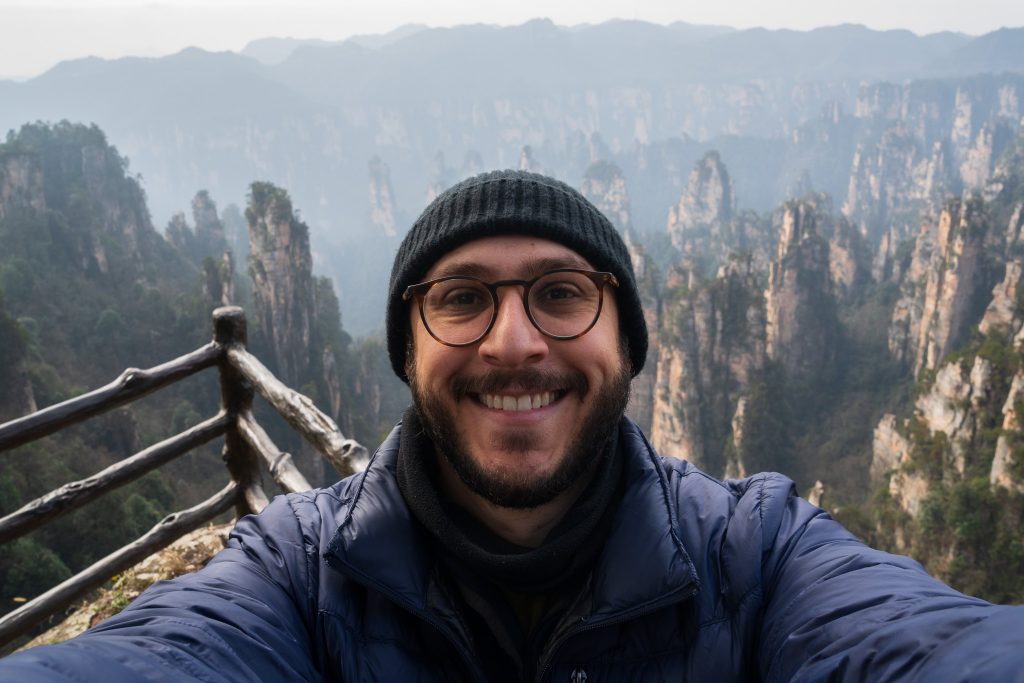
Georgia, China, Oman, and Reflecting on Travel
It wouldn’t be an annual birthday post if I didn’t talk a bit about this year’s lovely surprises and silly travel misconceptions. Right?
But, first things first – I’m excited to say that if 2018 started to re-invigorate my travel energy the last half of 2019 revved the engine and got things flowing again. In late 2018 and early 2019 I was struggling a bit to find places I was super excited about. At least – those that were accessible and (importantly) comfortable.
Over the past couple of years I’ve consistently sought out and photographed a large number of the world’s most accessible iconic sights. I also enjoy the challenge of seeking out and finding spectacular new destinations that are under-explored or, at the very least, unfamiliar to my home communities (eg; Mt. Huangshan in China which gets millions of predominantly Asian tourists each year, but relatively few westerners).
This left me struggling a bit on where to go next, what to get super excited about, and anxious about the options that were available. Many of the remaining destinations I came across either scared me/needed a travel companion, were financially draining, or didn’t excite me.
The ones that didn’t excite me: I’m not a huge fan of sitting on a beach for an extended period of time. If I can’t be active, and don’t have company of some sort, many of the tropical destinations remain relatively low on my to-visit list. I know I’ll probably love them once I get there, but as previous trips to parts of Belize and Zanzibar have revealed – a traditional resort destination isn’t where I’m focused at the moment. I’m also still very much interested in pushing my comfort zone and finding fresh and alien natural formations, landscapes, or experiences which makes the now more familiar locations somewhat less exciting (e.g. a trip back to Ireland or Spain). Of course, this always changes from year to year/phase to phase and I fully expect my focus here will be re-invigorated sometime soon. Other destinations are exciting but somewhat over visited/saturated giving them a Disneyland/artificial feel which often includes excessive crowds and stabilization.
Exciting but financially prohibitive: I would absolutely love to get back to Tanzania and to do another Serengeti safari. Similarly, Alaska and Kodiak Island with the bears are high on my list. Getting back out with polar bears and potentially a visit to Greenland to photograph and explore the glaciers are also dream trips. I’m also dreaming of exploring some of the destinations inside Russia at some point. And of course, the ultimate dream is an Antarctica/South Georgia extended photography trip.
I pinch myself every day, and am profoundly grateful that I’m able to even consider many of these as within the universe of possibility – let alone that some are a stretch investment and potentially financially possible. For some of the others? It’s good to have things to aspire towards over the next 60 years, right? I have no doubt, time and health permitting – I’ll find a way.
With the market crashing, the world in lockdown currently, job insecurity a consideration and things likely to change in the coming 36 months – I have no idea how my situation may change and what that will do to the threshold for some of these. But, health and career willing – there’s time and its more a question of when and how to make it a reality – not if it’ll be possible.
Scary, unsafe or in need of company: With 50+ countries, 5 continents, and years of cumulative time on the road under my belt it shocks people to learn just how scared/cautious I am of certain destinations. Perhaps in light of the explanation above about how I think and process situations and my inner voice/approach to exploring the world, that makes more sense. But, either way, it’s always a struggle where I’m constantly pushing myself to dispel misconceptions, overcome fears, and carefully explore new opportunities.
When I took stock of different destinations for exploration in late 2018 and the first half of 2019, I was faced by the prospect of new cultures, or regions that I knew virtually nothing about, and a long laundry list of fears ranging from the benign – such as ease of transport, quality of bathroom facilities (as you know I have a phobia of long bus rides and squat toilets), and language barriers. To the more grounded – solo travels in mountains as a high-risk activity in case of injury, general country safety/exposure to crime (eg LatAm/India – here’s looking at you), and hassle/security. An example of how this translates into very tangible concerns comes from my trip to Oman where I had to focus on sticking to paved roads to avoid any risk of my vehicle getting stuck in the sand. Without a second person, the logistics and safety considerations were quite simply…different and there were places I couldn’t go, and things I could not safely do as a result.
My brother David, and our #brothersberger trips have served as a wonderful opportunity to break through some of these fears. Together, we explored China, remote parts of Iceland, and wandered into Colorado’s Sand Dunes. We have a long history of incredible travels together and have a few in the pipeline down the road. But, this year, between work obligations and relational ones, his other commitments meant that work schedules didn’t align. Meanwhile, March of last year brought an incredible and eventful visit to Lofoten with a good friend and fellow photographer which energized my willingness to, at least selectively, start expanding who I travel with.
Still, it remains a massive challenge to navigate when to abandon the solo trip and how to do that in a fashion that is rewarding/fulfilling for everyone joining. How to pick destinations. When and where to push through fears/concerns and what the general outcome ends up being. Which is why three big trips towards the end of 2019 were incredible experiences and reminders.
It started with Georgia. After struggling to decide where to go in early October, high off of the incredible photography and travel in the Colorado Rockies and Sand Dunes with my family in June/July, I was really having a hard time booking. I wanted to photograph more sand dunes but the region of western China I was looking at didn’t make sense for ethical and logistical reasons. I kept eyeing Kyrgystan but was hesitant to do it solo. Similarly, most of South America – while interesting and a region I want to explore further – was just too far away, unstable, and of a hassle for safe solo travel. Right around that time, an airfare special popped up to the country of Georgia.
I was torn. The price was much less than all of the other last-minute options. But, I knew very little about Georgia other than that friends had loved it, there had been a war there, and some misinformed assumptions about it being fairly crime-laden and corrupt. To make things even worse, as I researched it further, the area I wanted to visit – Svaneti – was flagged as remote, difficult to get to, and so inaccessible that many mainstream car rental companies refused to rent cars with access to the region. Still, the timing looked good, and I knew I NEEDED to push myself to get a more adventurous solo trip in. It also meant I’d need to rent a car and drive the trip – in a country where everyone complained about the drivers. It made me nervous.
But, as I researched it more I started to get more context. The Svaneti region wasn’t AS difficult as people made it out to be, and infrastructure had been improved significantly. The country was affordable. The locals didn’t speak English in more rural areas but were incredibly friendly. It was, also, to my surprise not only very safe, but had extremely low levels of corruption. Still, the prospect of driving in the country and my timing – I was hoping to catch the first snow in the mountains, but to arrive early enough to get autumn colors but not blocked mountain passes – also made me particularly concerned about tackling it solo.
So, when a close friend, but non-photographer friend expressed her interest in joining I gave her my laundry-list of expectations for the trip and expressed a tentative openness to company vs. the typical default “no”. To her credit, she was up for it, and willing to sign on to the trip. No small feat, considering the focus on avoiding big cities, hours of delays each day as I paused to photograph random waterfalls, trees, fallen logs, or waited for light to change, and my haphazard approach to booking accommodation at max a day in advance, and usually closer to minutes or hours before arriving. I’m thrilled she did as what followed was a spectacular road trip through an incredible country timed perfectly.
The trip and the country were nothing short of magnificent. Our ramshackle, beat up car rental nicknamed “Adishi” was reliable if ugly. The Georgian people were magnificently kind and friendly. The country was absolutely gorgeous. The food was fantastic. The weather cooperated beautifully. The autumn colors left me awed. And the roads and Georgian drivers were far better than I’d been led to believe. My fears melted away like butter on a warm summer Arizona day and I found myself invigorated (photos here).
Which served to build my confidence and energize my wanderlust. Upon returning to Denmark from the quick 10-day jaunt, I immediately started exploring options for my December/holiday break. With an extended period of Christmas holidays, I planned to make the most of them with a longer trip. The question though? Where to? I looked at a return to Vietnam. Considered Malaysia. Watched airfare to Africa. Glanced at South America. But ultimately found airfare prices, security concerns, and logistics left me staring at a booking page for a route that would take me into China (Shanghai), include three primary destinations for photography/nature/culture and then kick down to Bangkok for 2 days, as part of an extended layover before balancing the frozen cold of mid-December in the Chinese mountains with the modest warmth and sand deserts of Oman to follow.
The trip would have been a fantastic #brothersberger trip had David been available. But, without him, as a solo trip – it left me nervous. Legs of it had been covered on our previous #brothersberger visit to China when we flew into Shanghai, cut across to Zhangjiajie and Tianmen Mountain. However, other parts were brand new – including visiting Mt. Huangshan the “Yellow Mountain”, and a heavy detour down to Fuzhou and the Xiapu region.
The Oman leg was the part I was most worried about. I had heard it was safe. I had heard it was easy to navigate. I had heard they were friendly. But, I just wasn’t sure what to expect. Especially given the only way to practically get around was to rent a car, and to just drive. It also turned out, that it was “peak” season in a country famous for its expensive infrastructure. I was also worried I’d be bored/unimpressed by the natural landscapes with many having strong similarities to the Arizona/Sonoran Mexico landscapes I grew up with. And to make things even more hairy, as the date approached for my departure, there was a surge in chatter about the Sultan’s failing health, the possibility of his passing, and fears of a possible coup. I repeatedly considered canceling the trip, monitored his health closely, and crossed my fingers I wouldn’t find myself on an evac plane out of the country as things imploded.
Ultimately, the trip went off largely without a hitch. The timing could not have been better. The Chinese leg went smoothly, with the exception of a lost leg due to a canceled flight. I was able to leverage my flexible itinerary to get all of the primary photos I wanted despite the challenging weather conditions. Mt. Huangshan was magnificent and largely empty. Xiapu was fascinating and full of incredible photography opportunities. Zhangjiajie and Tianmen mountain were enjoyable if less magnificent and exciting than when I’d been there previously with my brother David. Through it all, I was often also one of the only westerners around. After departing Shanghai, through the Huangshan and Xiapu legs, I believe I saw no more than 12 to 15 other western tourists over a week and a half – including in rail stations and airports. Yet, logistics, including two days with a chartered taxi driver who I could only speak to through Google Translate – went smoothly. Photos here.
Meanwhile, Oman left me humbled and delighted. I arrived feeling as though I’d need to be on guard, unsure what to expect, and assuming I’d have to show great care and caution on what areas I visited. I assumed I’d need to avoid going out at night, bleed money on expensive accommodation, and have trouble accessing the dunes. What met me, was an incredibly welcoming culture, full of friendly people. Roads were fantastic, access to the primary natural wonders I was interested in were easy, and I was never hassled, hustled, or annoyed. Things were so safe, welcoming, and friendly that I was comfortable exploring several small villages on the fringe of the sand dunes as dusk fell, walking the Bengali street markets after dark, and eating in local restaurants that had likely never seen an American before. I was able to book-on-the-go, and found $30-$40 dollar accommodations that were mostly clean, modern, and fantastic (no squat toilets)! Photos aren’t edited yet, but I did put together this quick video with a small number of clips I took between extended photo sessions.
In retrospect, the timing was incredibly lucky. Sadly, the Sultan of Oman passed away on January 10th, just 6 days after I returned to Denmark. Luckily, the transfer of power was smooth and the new Sultan seems to be committed to continuing in the footsteps of his predecessor.
My time in China was also extremely lucky. Arriving there December 14th and departing for Thailand December 28th meant that I missed the primary lockdown and mitigation efforts surrounding COVID-19 by weeks. Particularly disconcerting looking back, is the knowledge that COVID-19 was starting to spread throughout December and that the epicenter in Wuhan was situated exactly in the middle of my stopovers in Anhui at Mt. Huangshan and Zhangjiajie in Hunan. I’m grateful that due to the cold weather my physical interactions were limited, and I was largely outdoors and away from crowds. Also, that by luck, timing, or lack of exposure, I did not register any symptoms or cause to be concerned I’d been exposed. By the time mitigation efforts started, I’d already passed the 20+ day mark without showing signs of symptoms.
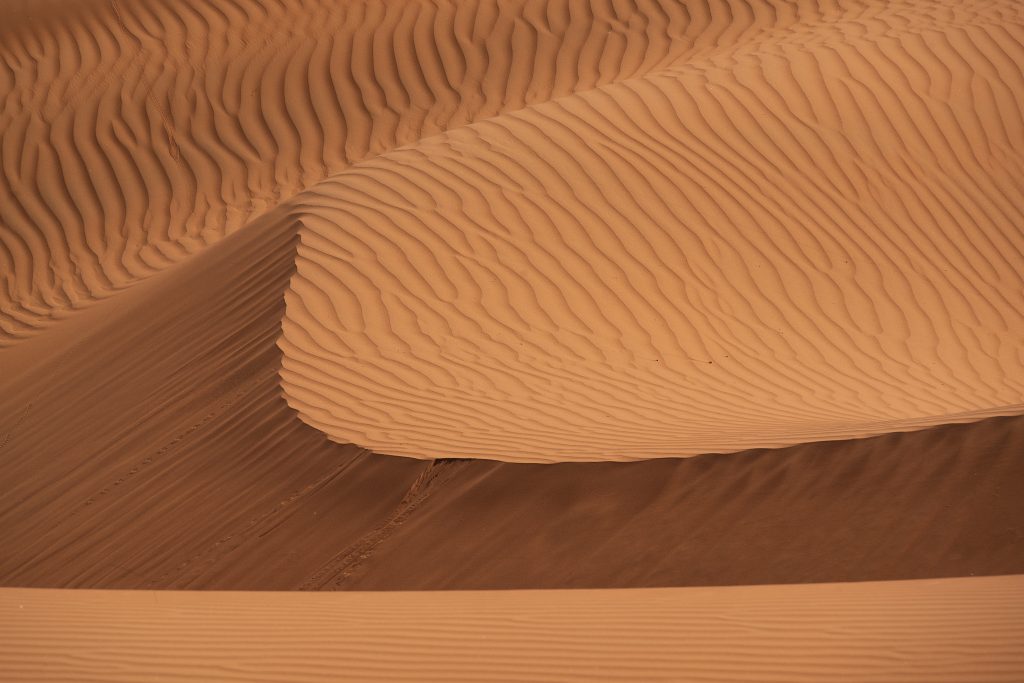
A Cell Phone and Data Package Are Liberating
The secret weapon that empowered both of the trips above was my cellphone. The thing that was re-affirmed this year for me over and over was that your cell phone is an incredibly powerful and liberating asset which unlocks travel opportunities. I ardently disagree with anyone who claims that the modern cell phone has been detrimental to travel and fundamentally undermines people’s ability to explore and adventure. I’d argue that if that’s the case – you’re using it wrong.
Some of you have probably heard of the “Lonely Planet Trail” – effectively, it embodies the trend that certain guides, guide books, and tools for centralizing knowledge historically had a heavy impact on travel behavior. In practice, difficulty accessing knowledge and navigating maps/homestays and accommodation tends to concentrate and centralize travelers. This goes as far back as structured travel. The format just changes with Lonely Planet and related guide books reflecting one of the most recent, guide book supported incarnations. But, even as I write this, I have a city guide to Norway and Sweden from 1899 which I’m sure facilitated many of the same trends.
To be sure – there were individuals that roamed further afield, left these well-trodden paths behind, and carved their own path. But in such cases, sleeping in fields, randomly approaching farmers, and moving at a much more cautious pace was far more necessary. In recent years, others would navigate by paper map, or pre-book an itinerary weeks or months in advance.
The beauty of having a phone with you now is that it bridges a wide range of different assets. It makes navigating down roads otherwise only frequented by locals possible. It makes stumbling upon random sights and points of interest organically much easier and the discovery of small or less well-known attractions much easier. It allows maximum flexibility but without fear of getting stranded, lost, or endangered. It helps with planning timings. In cases where you’re not traveling by car, it can also greatly enhance the ease of certain types of bookings. And perhaps most important of all, it dissolves language barriers in new, exciting, and fascinating ways.
I’m using these tools to empower my travels and exploration. They’re also an essential tool supporting solo trips, and non-solo trips like China, Oman and Georgia.
Language Barrier – One of the biggest differences I noticed this trip vs. my two previous visits to China was how much easier it was to engage with people. Previously, in many cases, the Chinese would close down, gesture they didn’t speak English, and end conversations almost immediately. I remember finding it was a stark contrast to what I’d experienced in other parts of Asia where usually locals would find a young child who spoke English, or together we’d fumble through gestures and drawings until we figured something out.
However, with each trip, the proliferation of translation apps has had a tangible and visible impact. By our second trip, most people would default to a translate app instead of shutting down or were open to using ours. By this trip, the previous challenges communicating were almost completely gone. Key apps like WeChat and DiDi automatically translated between English and Chinese. More than that, at one point I found myself sitting in a hostel with an old Chinese woman using the Google Translate app (downloaded with language pack) and the “draw character” capability. While often you’ll see people comfortable texting, in her case, she would write out the questions and statements for me – the app would turn them into Chinese characters – and then translate to English. In another situation, my taxi driver/chartered freelance guide and I communicated exclusively through translation apps over the duration of a 2-day period.
This was also essential in Georgia where the locals mostly only spoke Russian or Georgian. We spent one evening drinking moonshine and eating fresh fruit fed in a constant flow to us by an elderly Georgian grandmother who had to be in her 90s. We joined the other guests at the B&B – two Siberian families, who spoke a tiny bit of English supplemented by our apps. They’d driven 3,000 miles down to Georgia on holiday with the kids, and did the trip every few years. In addition to the Georgian moonshine, the Russian family had a board game they’d created, which came out and we all ended up playing. Having the phone also made it possible for them to share photos of their home city, their projects, etc. with us. It made for a lovely and memorable evening.
The optical text recognition and translation also helps navigating menus, talking to hosts, and engaging with people. I usually have data, but also make a point of downloading the Google Translate app and dedicated language packs for the country/region I’m visiting. I’m incredibly excited by the potential these technologies show and the impact they’ll have.
Booking and Discovering Accommodation – I hate having to lock in accommodations far in advance. It’s restrictive. It limits flexibility. It also adds a certain level of stress. There are times where you just have to do it. My first two nights in accommodation on top of Huangshan Mountain – for example – required booking weeks in advance and were expensive. But, had I locked in all the following legs of my trip, transport, accommodation, etc. – then extending the two additional nights opportunistically when dorm beds opened up at 1/5th the price – wouldn’t have been possible.
Having data, and then narrowing in on the booking site most widely used in a given country, opens up the potential for same-day bookings, reduces the risk of shady/fraudulent pricing, and makes wandering off the beaten path far easier. In China, I used Trip.com and Booking.com. In Oman, I used Booking and Agoda. In China, we booked most of our accommodation through Booking.com and were able to easily navigate the homestays and farm stays without stress. We also found small villages we’d have otherwise never ventured into, specifically because we had the apps at hand. In other areas, I’ll default to Airbnb or hostelworld.com.
In each of these cases, I was able to book the day before or same day, and sometimes mere hours in advance. I was also able to scout the viability of visiting some areas – and in the case of Oman, able to find accommodation that was outside the luxury resorts charging $150 a day while still securing quality, clean accommodation.
Transportation and Navigation – People often express fear and discomfort over transiting in China. Others stress concerns about the logistics, getting around, booking things, and finding the right train/plane/bus. I was amazed by how easy getting around in China was. Largely for two reasons. First, numbers remain the same. So the 5:30 7781 train from Shanghai to Huangshan may read Shanghai and Huangshan in Chinese, but 5:30 and the train number will still be in Arabic numerals. Second, I was able to book everything using cTrip’s Trip.com app. This included looking up train and flight time tables, as well as reserving/purchasing train reservations. Which meant the only thing I had to do was walk up to the pickup window, show the confirmation number, and collect the tickets. While China makes this abnormally easy, it’s increasingly the case around the world.
It also hits all stages of the journey. In the same way I was using the apps for long-distance journeys, I’d use DiDi in China, or Grab in Asia for low-cost transport within the city or to the airport. All backed by added levels of safety, mapping, and real-time tracking. While some, such as the Chinese taxi drivers in Zhangjiajie were still running mild scams for minor fees such as “parking”, these were fewer and far between. They also opened up the ability to hop on a Grab moped taxi to zip across the city, experience different areas I’d otherwise struggle to get to via public transport, and back in 1/10th the time for only marginally increased costs.
From a navigational perspective, I love using maps to explore in real-time, to chart my journey as it evolves, and to wander. From Romania to Scotland, Oman, and Georgia – the ability to look at a map, read the geographic terrain, look for points of interest, and navigate back roads, single-lane tracks, and to avoid major highways without risk of getting severely lost or stranded is an amazing asset.
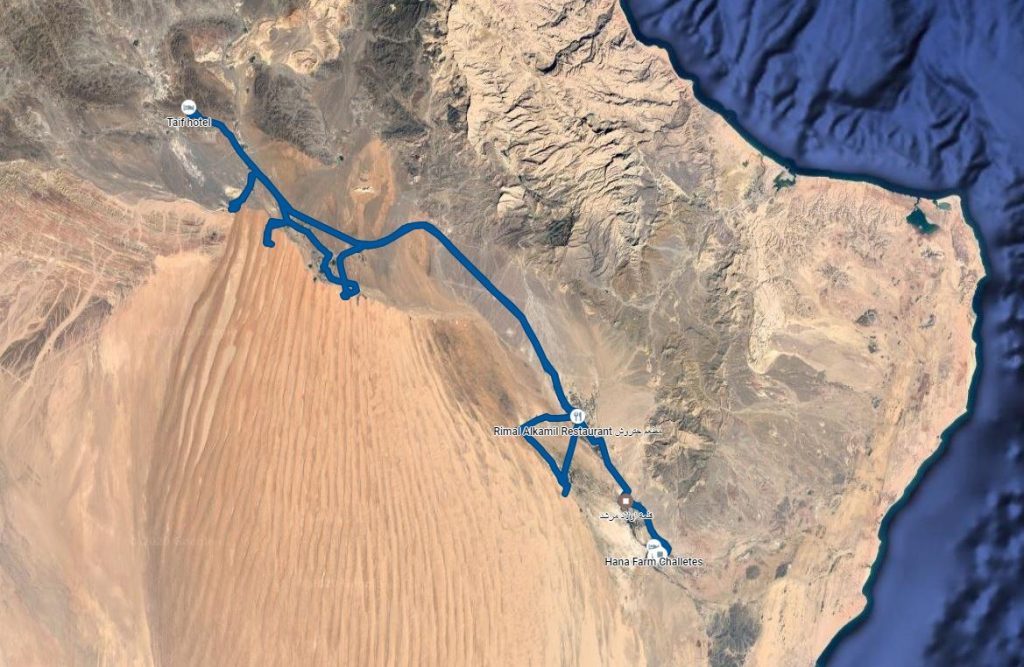
Should you accept the various privacy considerations you’re giving up, you can enable GPS tracking in Google Maps for example – and use it to chart and map your journey. The above highlights my route on a single day in Oman. You can see my accommodation (it was terrible btw). Start at the bottom, and my hotel in the evening at the top (it was excellent). There’s a spot I paused to eat marked and then you can see how I was using back roads, satellite imagery, and maps to wind in and get access to the Dunes.
You can also do some pretty fun stuff with this data afterward such as this example of the composited travel data I was able to pull from my phone from the Georgia trip.
What are the technical specifics? I have an unlocked iPhone with GSM/Sim capabilities. If I’m in Europe, Eurozone roaming is now automatic with a hefty data package attached which eliminates my need to swap sims. However, when I’m visiting other countries – the U.S., Oman, Vietnam, China, Iceland, etc. I’ll buy and swap out a local SIM. The price in MOST countries is extremely reasonable, even for hefty amounts of data. I rarely pay more than $10 for several GB of data. The exception, of course, is the US, where corruption and monopolies make finding anything under $60 almost impossible.
In many cases, you’ll find certain data is restricted. Sometimes it’s a small collection of websites, other times, it’s far more noticeable (e.g. China). In some cases, for privacy reasons as much as access I’ll use a VPN but using care and caution when I do it. It’s worth noting, that on Apple devices your app store is normally linked to your account. This means you’ll have surprisingly robust access to apps in, e.g. China, so long as you’re on your U.S. login. It’s also worth noting that VPN’s are always changing. Free VPN’s can be even more dangerous for your data than not using anything at all. Some premium VPN’s have a tendency not to work when/where you want them to.
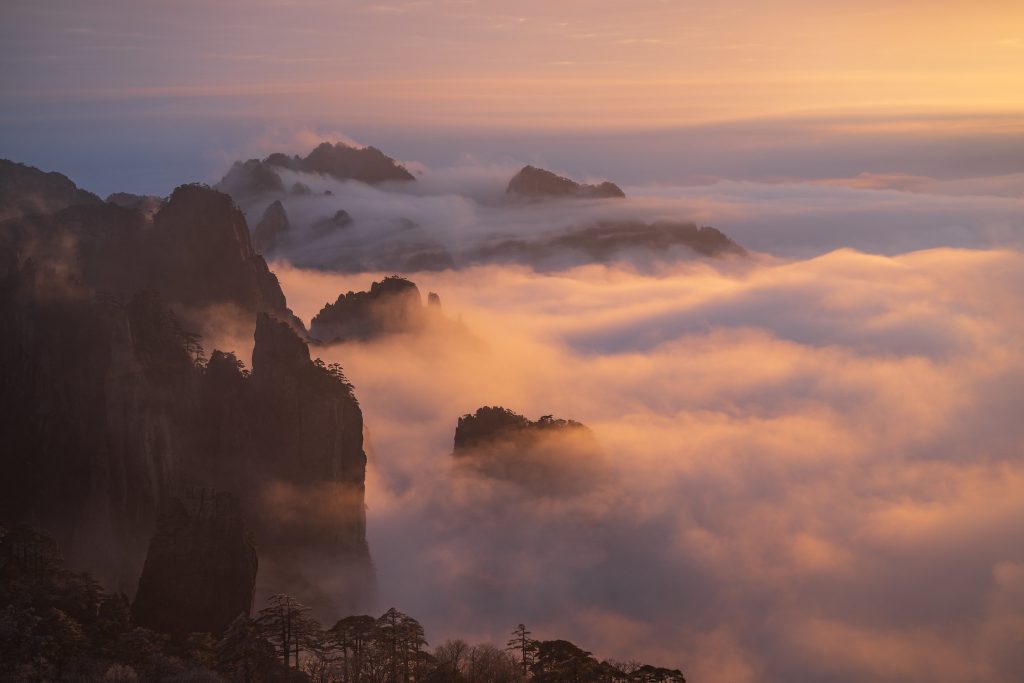
Evolving Photography
What a year. From when I turned 34 last March I enjoyed an incredible mixture of sunsets. There was the sunset viewed from atop a great dune in Colorado as the storm blew past and the sand settled. There were a host of magical sunsets during my week-long solo road trip through Scotland including stunning light over Eilean Donnan Castle and magical reflections near the Summer Isles. I enjoyed a pipe, sitting surrounded by autumn foliage while watching the sky light on fire behind a series of Svan Towers in Georgia and spent multiple evenings relaxing with a coffee on a back porch looking out over incredible vistas and sunset views of the Caucasus mountains. I sat hunkered down in freezing fog on a mountain top on Mt. Huangshan in China only to re-visit the same spot the following day where I served as witness to one of the most magnificent sunsets I’ve ever seen. I watched the blues of the Gulf of Oman go purple, reflecting the light while framed by a small fishing village and stood alone at the edge of the Wahiba Sands dunes as the sky turned golden, violet, and then faded to rich blues. And of course, I spent numerous quiet sunsets relaxing on one of the great stone mooring pillars that line Copenhagen’s Nyhavn harbor.
It was, simply put, another incredible year. One that positively overflowed with spectacular beauty, tranquility, and the type of moments that bring back a powerful sense of calm and joy when I touch upon their memory.
I am profoundly grateful for the role photography has played in facilitating those moments. Between the trips, the gear, and the time investment that goes into it – photography remains a significant financial and time investment for me. Even with my focus on doing things as economically as possible and managing many of these trips for significantly less than most assume – they’re a significant financial investment. Add in thousands of dollars in gear and the endless hours I spend editing my photos every year and it’s impossible not to periodically ask myself if it’s a sound investment.
But, when I step back and I look at all of the things I draw from photography it becomes a no-brainer. At least for the time being. Photography serves as a mechanism for not only getting me out and about, but for pushing my comfort zone. There’s also something about my camera that makes it a veritable time and discomfort distortion device. With it in hand, I can sit for hours watching the grass blow, people drift through city streets or the light change. With my camera in hand I’ll trudge up steep sand dunes, pouring buckets of sweat – just to see if a vantage point is slightly better. I’ll also spend hours hidden behind a small stone wall while being pelted by frozen wind and pre-dawn mist in the hope of capturing first light.
I’m sure there’s some path to those experiences without it. But the sense of purpose. The challenge and the opportunity to record it and to share it in the future with myself and others energizes me in a way simply trying to force myself into the moment otherwise just doesn’t do. So often in other aspects of our lives we talk about the need for purpose. But, when it comes to finding moments of peace, reflection, or introspection – we’re encouraged to forego the purpose in favor of … some nebulous nothing. I suspect, at least for myself, that of far more importance is the how and why I am drawn to something. For me, the end goal isn’t the perfect photo – that’s a bonus. What I’m truly in pursuit of is the facilitation of experience and insight. Perhaps, at some level, it’s similar to why others choose to pursue a black belt or sign on to run a marathon.
This is not to say the craft of photography isn’t also a deeply meaningful part of the process. I continue to go through waves of deep pride and satisfaction with my images and edits, followed by periods of deep frustration and dissatisfaction. It still amazes me how it happens, even after all these years of being aware of it – and sometimes in relatively short time horizons/the same piece of art. But, I’ve come to accept that it’s just part of my process.
Last year I set out to focus on enhancing my editing, printing more of my work, and submitting to various open calls and contests. I also wanted to work more on taking portraits.
I’m pleased to share that one of my photos was chosen as 1 of 3 Nature (Landscape and Wildlife) to represent Denmark in the World Photographic Cup international competition. I’ve also had another photo make it into the advanced judging round, for a still-pending photo competition. Similarly, it’s always quite interesting to see where my photos are getting picked up (and typically used illegally due to the CC-NonCommerical license I publish under). From major media, to large brands, independent blogs, and a mixture everywhere in between. One fun (legal) illustration of this was when Lonely Planet featured my photo of Iguazu Falls in Argentina prominently in their 2019 “Best Destinations to Visit in 2020” guide. Another fantastic highlight was when I was approached by the folks at Simon & Schuster to license one of my Danish photos as cover art for the U.S. version of “The Tenant” a crime novel written Katrine Engberg, a bestselling Danish author.
I’ve already learned a lot about the printing process and found a printer I like. So, moving forward over the year to come, I’ll continue to experiment with paper, print types, and how to best prepare my photos. It’s definitely a craft in and of itself to prepare artwork for print. It’s also a wonderfully rewarding experience to get to hold a photo in my hands, especially in larger A3, A2, or A1 sizes. I’m still not actively selling prints, but have fulfilled a few one-off requests and hope to do more selectively on this front in 2020. As I get more confident with my ability to deliver the quality and crispness of print I feel necessary – I’ll work to make more prints selectively available.
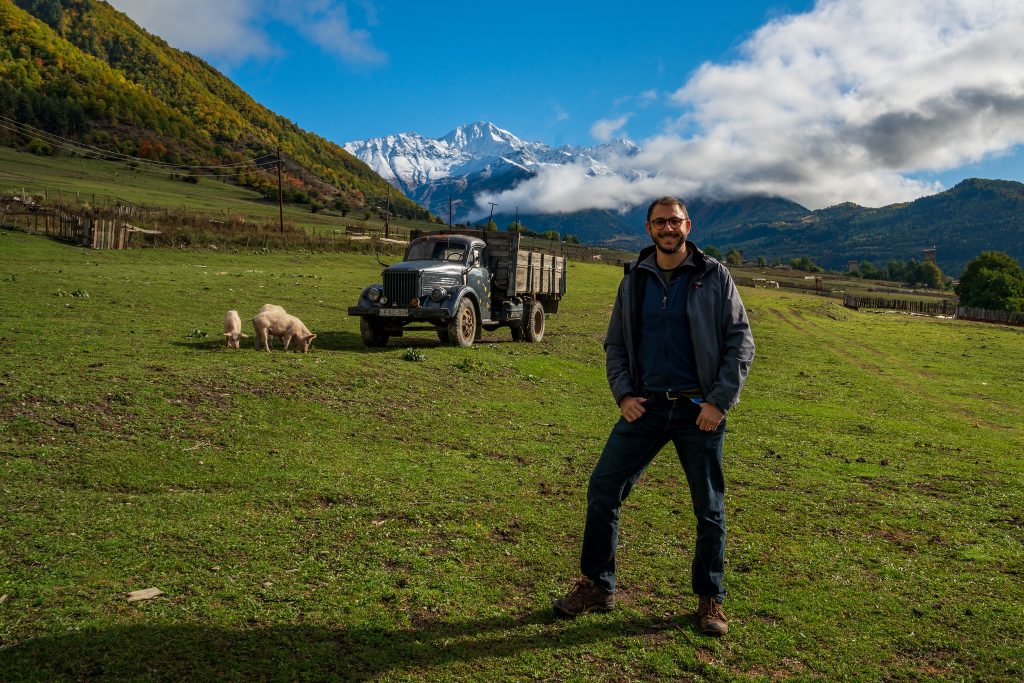
Closing Thoughts on Turning 35
What is 35? It’s an interesting age. When I was younger it was one of those cultural thresholds that’s meant as a waymarker. I find it interesting as a point of reflection. I suppose, if any emotion, in particular, jumps out at me – it’s surprise. Surprise that 35 is already here. Surprise at how life evolves and at how content I am with things. There’s a lot I want to work on, both as projects and within myself – but that’s exactly how I want it. I suppose at some level, I thought I’d be more ready to be settled by now. But as I sit here and reflect, I feel as though there’s still ample time and no need to rush myself. These past five years have focused heavily on embracing the moment, the journey, and relishing the details and I love where it continues to lead.
As to turning 35 in the midst of lockdown during a pandemic with a world in transition? It adds a certain context to things. It is a powerful reminder not to take things for granted. It’s also a strong opportunity to push myself to practice what I preach. To focus on finding the facts, framing and better understanding the historical context, and keeping in touch with my inner self and needs. As an introvert, I’m happy with the added down time and time with my thoughts. With a computer connection as a gateway, I feel connected to friends around the world. I’m also awed by how it brings people together, and has led the best among us to feel even more connected to each other.
I celebrated this birthday in the oddest of ways. The birthday itself fell on my 15th day working from home and of partial isolation. It also fell on the same day my employer announced a crisis-response initiative that included a round of temporary salary reductions led by the C-level. Stressful news for a birthday. But, at the same time, good news in that it showed leadership and meant we weren’t looking at a round of layoffs. Framing and context is key. Beyond that, my brother and friends then surprised me with first the deliver of a bottle of Scotch by courier, and then a mass-zoom call where more than 15 of them joined me for a digital drink, in costume, before showing a hilarious and heartfelt video. It was an amazing and touching surprise and left me feeling incredibly blessed.
So… who knows where this year will take us. Some things will change dramatically. But, in general, history assures me that much will also remain the same. I can only hope that this crisis builds the foundations of a new renaissance in investment in people, social programs, health, welfare, and education. Let’s see where next year finds me. It’s guaranteed to be one heck of an eventful year.
Love the 4-day rule thing – the same thing with the Germans, plans made weeks ahead… I hope corona will get people to chill out and take it more day by day or even week by week